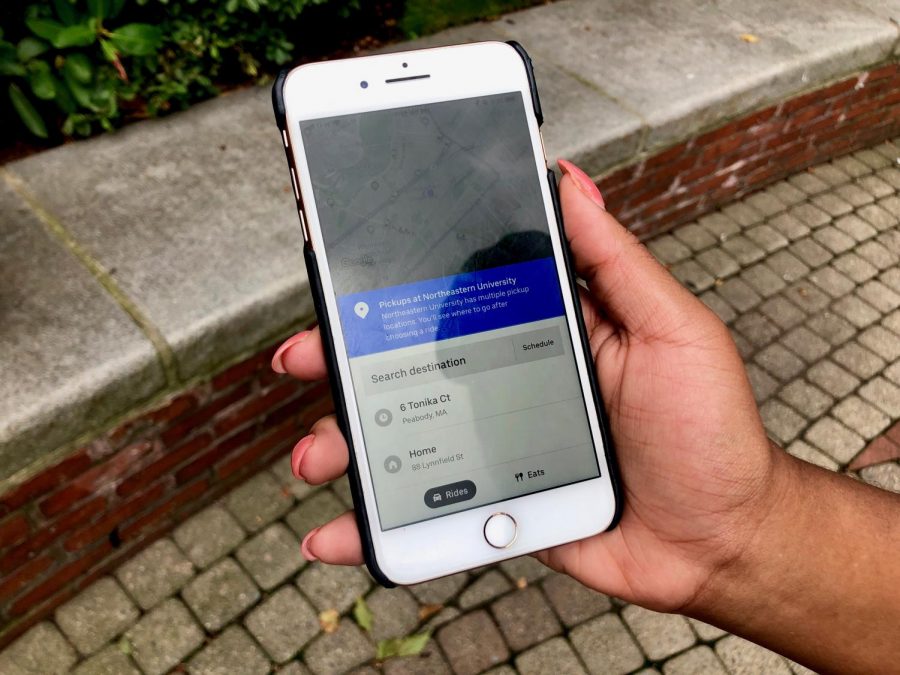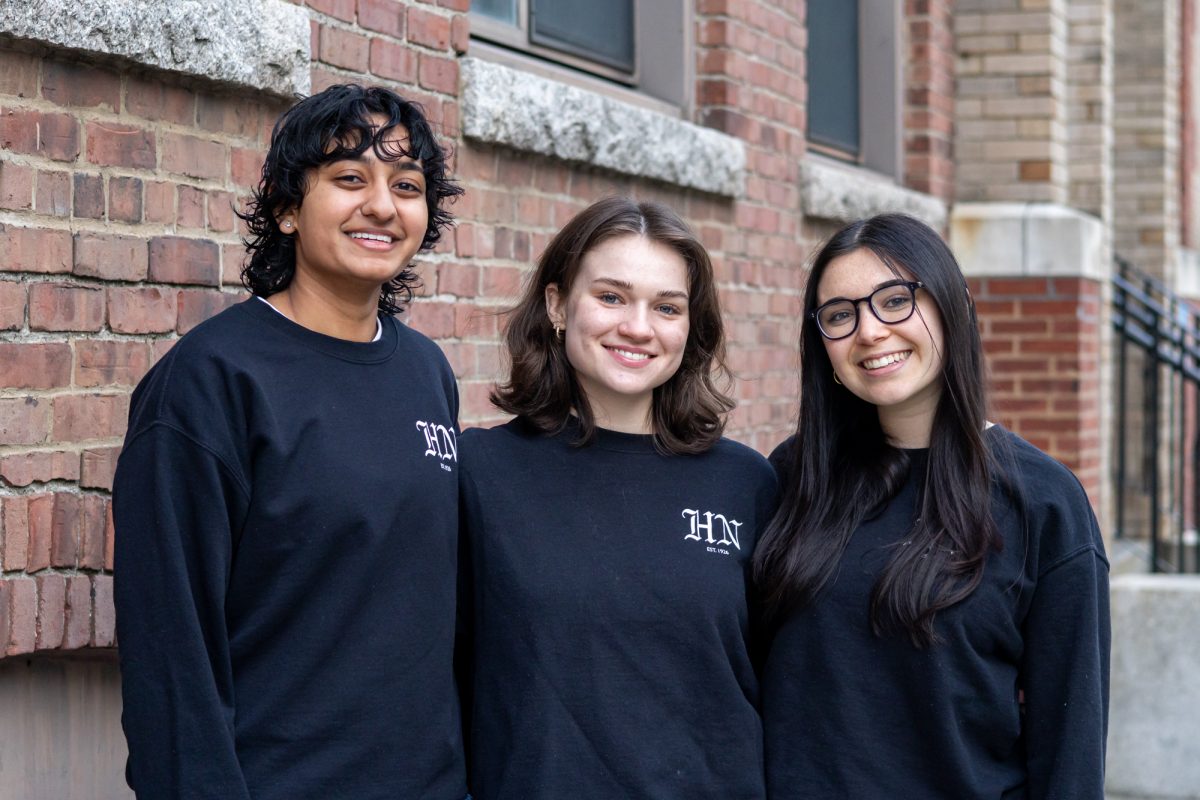Safety concerns highlight shift in ride-sharing culture
A student requests a ride from the Uber app.
September 18, 2019
Boston streets are no stranger to the whirlwind of college nightlife. It’s common to see throngs of students piling into cars through ride-sharing apps like Uber and Lyft, known for shuttling students to and from their next escapade.
Yet despite a growing prominence on campuses city-wide, an emerging conversation about the safety of ride-share services and their implications on city development may be grinding that progress to a halt.
In 2016, a study conducted by the Pew Research Center found that roughly 28 percent of people aged 18 to 29 nationwide used ride-hailing apps, and that seven percent used them on a daily basis. As the service grows in popularity, students have an explanation for its increasing usage.
“Typically the T is cheaper and more convenient, however, to get north and south of Boston, you need to use ride-share apps,” said Northeastern first-year Russell Zingler, a computer science and media arts combined major.
Second-year biology major Taylor Reed voiced similar concerns about the T’s limited range.
“I prefer to use Lyft more than the T, because usually the T won’t get me to exactly where I need to go,” Reed said. “I don’t want to have to walk around the city at night.”
Despite its efficiency, many students are wary of the service’s dangers.
“I wouldn’t say I’ve ever felt unsafe in an Uber, but definitely uncomfortable,” said first-year biology major Kevin Roebelen. “Uber has made some efforts to make their rides safer, but there’s still this precautionary measure that I take.”
Recent events have called Uber’s credibility into question. In March, 21-year-old University of South Carolina student Samantha Josephson was abducted and killed after entering a car she mistook for her Uber. The company struggles to regulate ‘fake’ ride-share cars, raising concerns about the well-being of college students who use these services on a daily basis, often intoxicated or late at night.
Kayla Whaling, communications lead for Uber’s media relations team, responded to the situation in an email to The News.
“At Uber, we remain committed to help increase awareness of how to use Uber safely and utilize technology features in-app to encourage everyone to be safe,” the statement read.
Whaling highlighted Uber’s new ‘Back to College’ campaign, which outlines their ‘Check Your Ride’ steps: verify the license plate, check the car make and model and take note of the driver’s photo. This year, the company will join forces with the National Crime Prevention Council and Young Minds Inspired to develop a safety manual detailing campus safety guidelines and sexual assault prevention, among other prevalent topics.
“Since announcing Uber’s Campus Safety Initiative earlier this year, we are proud to be joined with key safety organizations with expertise in student campus safety,” Whaling wrote. “We will be providing safety materials and information to more than 4,000 campus safety leaders at universities and colleges across the U.S. and Canada.”
Extensive safety efforts may protect students who are getting into vehicles, but some still raise concerns about the lack of city jurisdiction over ride-share policies, specifically in vetting new drivers.
NU Professor Ted Landsmark, director of the Kitty and Michael Dukakis Center for Urban and Regional Policy, raised concerns about the departure of taxis from many downtown Boston regions after ride-share apps monopolized their services.
“Taxis were licensed through the police, and drivers required criminal background checks,” Landsmark said. “But the city doesn’t have the same control over Uber.”
In a college-dominated city like Boston, drivers may require more specialized training in order to keep students safe.
“Often passengers are drunk, unruly, rude, throwing up, and maybe not tipping so well,” Landsmark said. “But for drivers on weekend nights, those are key moments for making money that are the most dangerous in terms of demeanor.”
Beyond safety, Boston locals must confront the persistent issue of traffic congestion caused by an influx of vehicles roaming the streets. Moreover, policymakers worry about potential impacts of ride-sharing services on class divides, isolating those who may not be able to afford rides and pushing less funding for bussing and train systems.
“Historically, students have been a core constituency for supporting transportation in Boston,” Landsmark said. “Cities survive on the basis of one’s ability to be mobile within them.”







